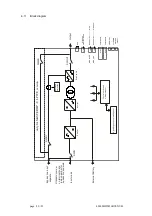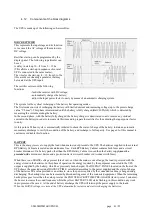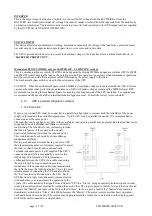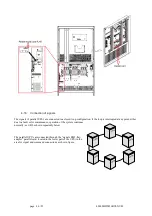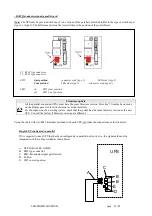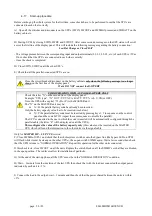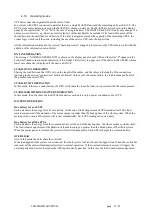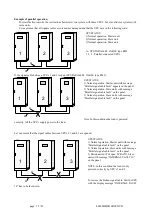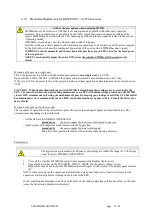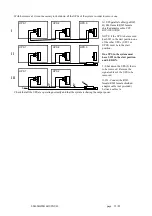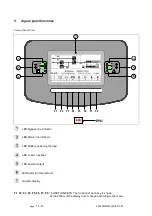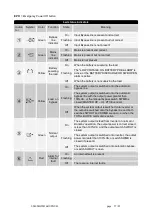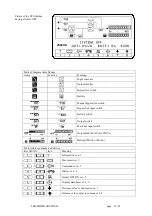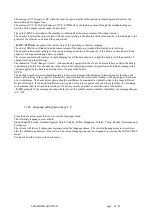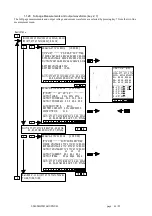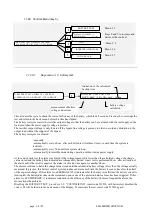
0MLMHTM16RUENUB page 51 / 85
4.18
Operating modes
UPS units connected in parallel share the current load.
In a system with UPS’s connected in parallel, there is a single MASTER unit and the remaining units are SLAVE. The
UPS’s are same models and sizes and the MASTER is chosen on start-up. The MASTER unit is shown on the display
panel by the capital letter “P” (or “B” in the case of a single battery). The MASTER and SLAVE units may change. If a
unit goes out of service, e.g. due to an inverter fault, it will automatically be excluded. The load at this point will be
shared between the units that are still active. If the total load power exceeds the capacity of the remaining UPS’s, the
system logic switches all the units, including the out of the service UPS, onto the bypass line.
All the information contained in the section “operating modes” at page 36 in relation to the UPS remains valid with the
addition of the information set out below.
ON LINE OPERATION
The message: “NORMAL OPERATION” is shown on the display panel of each UPS and the letter “P” appears in the
bottom left-hand corner near the indication of the model. This letter is in upper case if the unit is the MASTER, while a
lower case character is displayed if the unit is a SLAVE.
STAND-BY ON OPERATION
Sharing the load between the UPS’s rely on the length of the cables, and the rules on the length of the connections
indicated in the section “connections” must be followed. In the event of a mains failure, the load is managed by all of
the parallel-connected UPS’s.
STAND-BY OFF OPERATION
In this mode, if there is a mains failure, the UPS’s will share the load; the load is not powered with the mains present.
STABILIZER WITHOUT BATTERY OPERATION
In this mode, the units share the load. Without batteries each unit is only a power conditioner, not a UPS.
BATTERY OPERATION
One battery for each UPS
Each unit draws the energy from its own battery. At the end of its backup time each UPS excludes itself. The load
remains unpowered if the duration of the mains outage is greater than the backup time of the whole system. When the
mains power is restored the system will restart automatically. Each UPS recharges its own battery.
One battery for all the UPS’s.
Each unit draws the energy from the common battery. At the end of the backup time, the whole system excludes itself.
The load remains unpowered if the duration of the mains outage is greater than the backup time of the whole system.
When the mains power is restored the system will restart automatically. Each UPS recharges the common battery.
OVERLOAD
Also in this mode the units share the overload.
If the load applied to the system is not reduced, the whole system will switch onto the bypass line. When the overload is
removed, all the units will automatically return to normal operation. If the overload remains, however, it triggers the
external protection devices located at the UPS input on the bypass line. In this case the load would remain unpowered.




